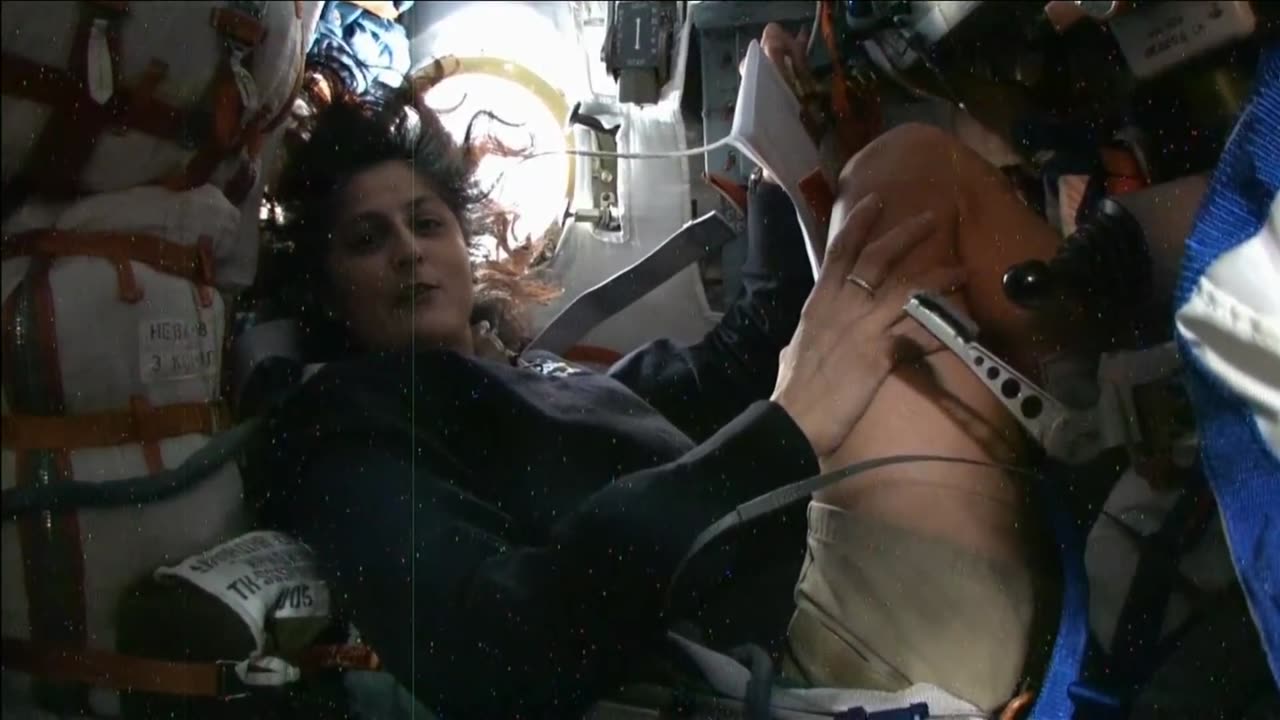Premium Only Content

HOW IT WORK-The international space station
Introduction:
The International Space Station (ISS) stands as a testament to international collaboration, human ingenuity, and the pursuit of scientific exploration beyond the boundaries of our planet. Suspended in the vacuum of space, this remarkable engineering marvel serves as a microcosm of life and research in an environment vastly different from Earth's. This article delves into the intricate workings of the ISS, shedding light on the technology, science, and human efforts that enable its existence and functionality.
Orbital Habitat and Structure:
The ISS orbits the Earth at an altitude of approximately 400 kilometers, completing an orbit every 90 minutes. Its modular structure, composed of interconnected modules, laboratories, and living quarters, spans an area comparable to that of a football field. The station's modules serve distinct purposes, including scientific research, technology development, living quarters, and communication. These modules are joined by a network of trusses, solar arrays, and docking ports, creating a habitat capable of sustaining human life for extended periods.
International Collaboration:
One of the most remarkable aspects of the ISS is the international collaboration that made its construction and operation possible. A consortium of space agencies, including NASA (United States), Roscosmos (Russia), ESA (European Space Agency), JAXA (Japan Aerospace Exploration Agency), and CSA (Canadian Space Agency), came together to contribute their expertise, modules, and resources. This collective effort showcases how nations can unite for a common goal beyond political boundaries.
Life Support Systems:
Maintaining human life in the harsh environment of space requires complex life support systems. These systems provide astronauts with breathable air, potable water, temperature regulation, and waste management. The recycling of air and water, along with the management of carbon dioxide and other waste products, is crucial for sustaining life on the ISS without relying heavily on resupply missions from Earth.
Scientific Research:
The ISS serves as a unique laboratory for conducting experiments in microgravity. Microgravity, or the sensation of weightlessness, enables scientists to study the effects of this environment on various physical, biological, and chemical processes. Experiments on the ISS have contributed to advancements in medicine, materials science, fluid dynamics, and fundamental physics, offering insights that would be impossible to achieve on Earth.
Technology Development:
In addition to its scientific contributions, the ISS serves as a platform for testing and developing new technologies for space exploration. From advanced robotics and space suits to communication systems and navigation tools, the station provides a real-world environment for refining technologies that will be essential for future missions to the Moon, Mars, and beyond.
Astronauts' Daily Life:
Living and working on the ISS requires astronauts to adapt to a unique lifestyle. Their daily routine involves a combination of conducting experiments, maintaining the station's systems, exercising to counteract muscle and bone loss, and communicating with loved ones back on Earth. The absence of a natural day-night cycle due to the station's rapid orbit necessitates the use of artificial lighting to simulate a 24-hour day.
Conclusion:
The International Space Station stands as a shining example of human achievement, embodying the spirit of exploration and cooperation that drives scientific progress. Its operation in the challenging environment of space underscores the boundless potential of humanity when it comes together to tackle complex challenges. As the ISS continues to orbit our planet, it paves the way for future endeavors that will push the boundaries of our understanding of the universe and our place within it.
-
 8:05:28
8:05:28
RalliedLIVE
9 hours ago $2.54 earnedSpecialist Addicted Man Plays Warzone
56K2 -
 1:05:42
1:05:42
I_Came_With_Fire_Podcast
7 hours agoFaith & America's Founders
19.7K1 -
 9:21:33
9:21:33
Dr Disrespect
13 hours ago🔴LIVE - DR DISRESPECT - THE BEST IS BACK!
189K24 -
 1:32:53
1:32:53
Badlands Media
21 hours agoAltered State S3 Ep. 34
62.3K4 -
 43:41
43:41
CarlCrusher
4 hours agoSHOCKING Discovery on the Path of the Skinwalker | Thunder Strike Ranch | Episode 2
25.4K3 -
 30:58
30:58
Solar Groove Muzic
1 day ago $0.47 earnedSUMMER AFRO HOUSE BEATS of 2025
19.1K1 -
 8:38
8:38
WhaddoYouMeme
9 hours ago $1.71 earnedChristians in Iran Are Being Hunted—Here’s Why
25.2K22 -
 3:49:16
3:49:16
VapinGamers
6 hours ago $0.73 earnedCOD Black Ops 6 with Abnerdagreat, Gunnin and Runnin! - !rumbot
18.6K1 -
 1:53:32
1:53:32
Glenn Greenwald
7 hours agoWhy Did Zohran Win in NYC? Plus: Gazan Pulitzer Prize Winner Mosab Abu Toha on the Latest Atrocities | SYSTEM UPDATE SHOW #476
197K111 -
 1:41:14
1:41:14
RiftTV/Slightly Offensive
10 hours agoCrowder Takes SHOT at Candace, “Panicans” OBLITERATED? | The Rift | Guests: Hodge Twins
52K28